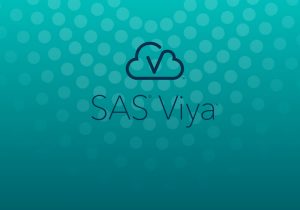 SAS Data Connector to Oracle lets you easily load data from your Oracle DB into SAS Viya for advanced analytics. SAS/ACCESS Interface to Oracle (on SAS Viya) provides the required SAS Data Connector to Oracle, that should be deployed to your CAS environment. Once the below described configuration steps for SAS Data Connector to Oracle are completed, SAS Studio or Visual Data Builder will be able to directly access Oracle tables and load them into the CAS engine.
SAS Data Connector to Oracle lets you easily load data from your Oracle DB into SAS Viya for advanced analytics. SAS/ACCESS Interface to Oracle (on SAS Viya) provides the required SAS Data Connector to Oracle, that should be deployed to your CAS environment. Once the below described configuration steps for SAS Data Connector to Oracle are completed, SAS Studio or Visual Data Builder will be able to directly access Oracle tables and load them into the CAS engine.
SAS Data Connector to Oracle requires Oracle client components (release 12c or later) to be installed and configured and configurations deployed to your CAS server. Here is a guide that walks you through the process of installing the Oracle client on a Linux server and configuring SAS Data Connector to Oracle on SAS Viya 3.1 (or 3.2):
Step 1: Get the Oracle Instant client software (release 12.c or later)
To find the oracle client software package open a web browser and navigate to Oracle support at:
http://www.oracle.com/technetwork/topics/linuxx86-64soft-092277.html
Download the following two packages to your CAS controller server:
- oracle-instantclient12.1-basic-12.1.0.2.0-1.x86_64.rpm
- oracle-instantclient12.1-sqlplus-12.1.0.2.0-1.x86_64.rpm (optional for testing only)
Step 2: Install and configure Oracle instant client
On your CAS controller server, execute the following commands to install the Oracle instant client and SQLPlus utilities.
rpm –ivh oracle-instantclient12.1-basic-12.1.0.2.0-1.x86_64.rpm rpm –ivh oracle-instantclient12.1-sqlplus-12.1.0.2.0-1.x86_64.rpm |
The Oracle client should be installed to /usr/lib/oracle/12.1/client64.
To configure the Oracle client, create a file called tnsnames.ora, for example, in the /etc/ directory. Paste the following lines with the appropriate connection parameters of your Oracle DB into the tnsnames.ora file. (Replace "your_tnsname", "your_oracle_host", "your_oracle_port" and "your_oracle_db_service_name" with parameters according to your Oracle DB implementation)
your_tnsname = (DESCRIPTION = (ADDRESS = (PROTOCOL = TCP)(HOST = your_oracle_host)(PORT = your_oracle_port )) (CONNECT_DATA = (SERVER = DEDICATED) (SERVICE_NAME =your_oracle_db_service_name) ) ) |
Next you need to set environment variables for the Oracle client to work:
LD_LIBRARY_PATH: Specifies the directory of your Oracle instant client libs
PATH: Must include your Oracle instant client bin directory
TNS_ADMIN: Directory of your tnsnames.ora file
ORACLE_HOME: Location of your Oracle instant client installation
In a console window on your CAS controller Linux server, issue the following commands to set environment variables for the Oracle client: (replace the directory locations if needed)
export LD_LIBRARY_PATH=/usr/lib/oracle/12.1/client64/lib:$LD_LIBRARY_PATH export PATH=/usr/lib/oracle/12.1/client64/bin:$PATH export TNS_ADMIN=/etc export ORACLE_HOME=/usr/lib/oracle/12.1/client64 |
If you installed the SQLPlus package from Oracle, you can test connectivity with the following command: (replace "your_oracle_user" and "your_tnsname" with a valid oracle user and the tnsname configured previously)
sqlplus your_oracle_user@your_tnsname |
When prompted for a password, use your Oracle DB password to log on.
You should see a “SQL>” prompt and you can issue SQL queries against the Oracle DB tables to verify your DB connection. This test indicates if the Oracle instant client is successfully installed and configured.
Step 3: Configure SAS Data Connector to Oracle on SAS Viya
Next you need to configure the CAS server to use the instant client.
The recommended way is to edit the vars.yml file in your Ansible playbook and deploy the required changes to your SAS Viya cluster.
Locate the vars.yml file on your cluster deployment and change the CAS_SETTINGS section to reflect the correct environment variables needed for CAS to use the Oracle instant client:
To do so, uncomment the lines for ORACLE_HOME and LD_LIBRARY_PATH and insert the respective path for your Oracle instant client installation as shown below.
CAS Specific #### # Anything in this list will end up in the cas.settings file CAS_SETTINGS: 1: ORACLE_HOME=/usr/lib/oracle/12.1/client64 #3: ODBCHOME=ODBC home directory #4: JAVA_HOME=/usr/lib/jvm/jre-1.8.0 5:LD_LIBRARY_PATH=$LD_LIBRARY_PATH:$ORACLE_HOME/lib |
Run the ansible-playbook to deploy the changes to your CAS server.
After ansible finished the update, your cas.settings file should contain the following lines:
export ORACLE_HOME=/usr/lib/oracle/12.1/client64
export LD_LIBRARY_PATH=$LD_LIBRARY_PATH:$ORACLE_HOME/lib |
Now you are ready to use SAS/ACCESS Interface to Oracle in SAS Viya.
Step 4: Test SAS/ACCESS Interface to Oracle in SAS Studio
Log on to SAS Studio to load data from your Oracle DB into CAS.
Execute the following SAS Code example in SAS Studio to connect to your Oracle DB and load data into CAS. Change the parameters starting with "your_" in the SAS code below according to your Oracle DB implementation.
/************************************************************************/ /* Start a CAS session */ /************************************************************************/ cas; /************************************************************************/ /* Create a Caslib for the Oracle connection */ /************************************************************************/ caslib ORACLE datasource=( srctype="oracle", uid="your_oracle_user_ID", pwd="your_oracle_password", path="//your_db_hostname:your_db_port/your_oracle_service_name", schema="your_oracle_schema_name" ); /************************************************************************/ /* Load a table from Oracle into CAS */ /************************************************************************/ proc casutil; list files incaslib="ORACLE"; load casdata="your_oracle_table_name" incaslib="ORACLE" outcaslib="casuser" casout="your_cas_table_name"; list tables incaslib="casuser"; quit; /************************************************************************/ /* Assign caslib to SAS Studio */ /************************************************************************/ caslib _all_ assign; |
The previous example is a simple SAS program to test access to Oracle and load data from an Oracle table into CAS memory. As a result, the program loads a table in your CAS library with data from your Oracle database.

2 Comments
Hi,
If I have a sas code which is joining 4-5 oracles tables using proc sql and then we are loading the output data in sasdataset and then in LASR .
To use same functionality in Viya , I have created caslib but do I need to load all 5 tables into this newly created caslib to use fedsql (using fedsql instead of proc sql to use cas processing capability) to perform join ?
Hi Anant, Thanks for your question! Feel to post this to the SAS Data Management Community (communities.sas.com/data-management) where a pool of experts following that channel may be able to help you out.